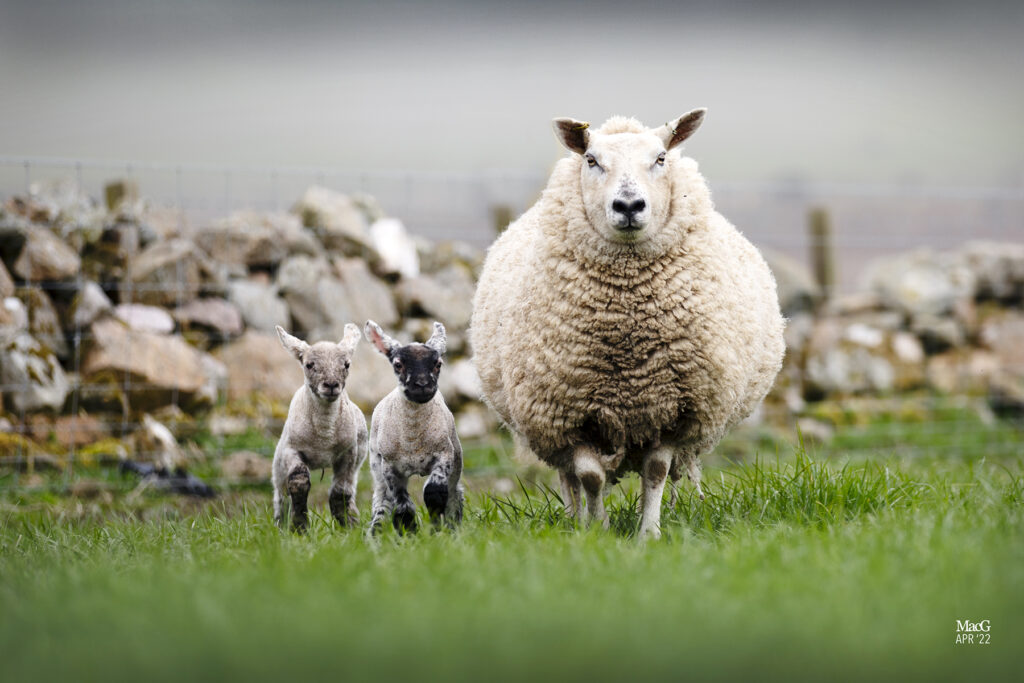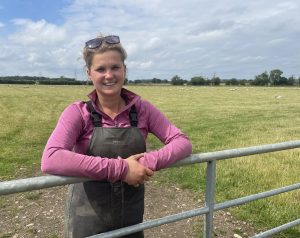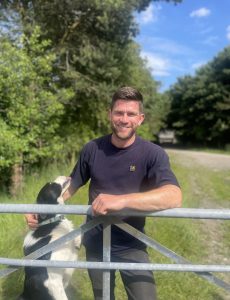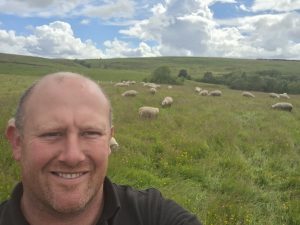with thanks to Harry Emslie, Mintlaw
Also appeared in The Press and Journal on May 29
Harry Emslie says future fit farming is about challenging his family’s Aberdeenshire based traditional system and replacing it with one that will remain sustainable and profitable.
“Maximising kilos of lamb per acre from a pure forage-based system is the strategic way to go, underpinned by a combination of Innovis genetics and knowledge from QMS’s grazing group. Furthermore, it’s about economies of scale.” His two strong shepherding team, Jac Roberts and Mhari MacLeod are demonstrating they can successfully manage a 4,000-ewe flock.
“We are breeding a ewe that will do the work for us and so far have introduced the Aberfield maternal sire to develop a 1,000 ewe crossbred flock which we are crossing with the Primera meat sire run on a 300-acre unit that includes 50 acres fodder beet,” he explains. “We are breeding an Aberfield cross flock that can lamb by itself outdoors on to a flush of grass from mid-April. Literally just a handful required help this year. Ewes and lambs are initially set-stocked before we move them on to a 21-day rotational grazing system stocked at approximately 15 ewes and lambs per acre.
“These Primera sired lambs are easy fleshing; we make the first draw at 10 to 12-week weaning, whilst 90% of the crop are reaching 19.5kg target finishing weight off grass at an average 15 to 16 weeks and the remainder off forage crops,” says Mr Emslie.
“We’ve found the Aberfield cross ewes to have low maintenance demands. We would normally budget for our March lambing ewes bearing twins at approximately £7 to £9 per lamb pre lambing concentrate, and with the increase of raw materials this year we were looking at a cost of £29 per lamb for creep feed if we were to do so.
“The Aberfield flock has received no concentrates since its inception; instead ewes have received fodder beet pre-lambing costing 3p to 4p per day over the three months pre lambing. This is their only source of protein and starch and so far, seems to be doing them well.
“Furthermore, the Aberfield ewes are averaging 75kg, considerably lighter than our traditional bred ewe so eventually we should be able to increase stocking rate,” he says.
“The performance of our early lambers was hard to beat, and with the costs slotted in and the longevity of the rams used then the Aberfield ticks many boxes. We historically used one ram to 40 ewes. The Aberfield has increased that to 100 per ram, and lasting two to three years longer, justifying their investment. We lamb on a 21-day block with 96% put to the ram born in this period. This year, the one to two crop Aberfield cross ewes scanned 195% with 8% losses. They are definitely kinder to shepherd than traditional types.”
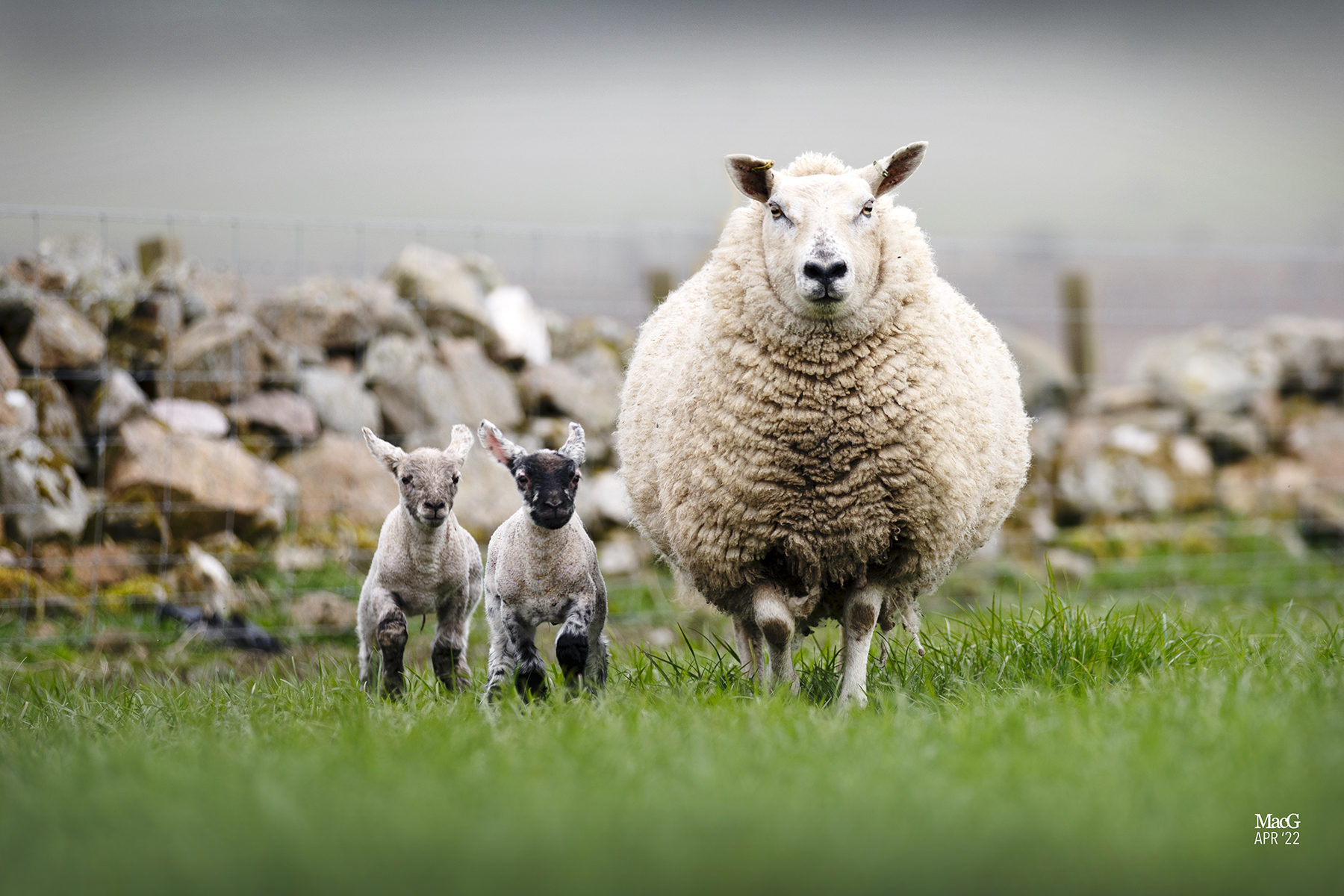
Mr Emslie continues: “During the last six years our farming business has undergone a big cultural change; we’ve evolved from a traditional 400-ewe flock operating alongside a low output arable system to one which we believe will remain sustainable and profitable.
“We are trying to get the farm to do what we think it can do and since we are interested in livestock, we decided it was time to go back to basics; and for us, a sheep enterprise is the answer, however we’re aware it’s not for everyone.
“Everyone wants to produce a lamb that would top the market, however, to get a good Continental or native bred ram we were paying over the odds, they had a poor ewe ratio and they didn’t seem to last on our system.
“I believe traditionalism can stifle a business; there’s got to be a willingness to consider changing. It’s all about having the right mindset and the right team to make it work,” he says.
“The QMS group challenged our thinking. We reviewed our flock’s traditional genetics and liked what Innovis had to choose from; for starters they were forage bred and reared and in particular we liked the maternal Aberfield – it was long, clean and good on the shoulder, and we began to see it working on units in our QMS grazing group where the focus was on efficiency and profit.
“When we initially invested in Innovis genetics five years ago, some thought it was a joke, however we wouldn’t embark on anything we didn’t believe in, and when we began to see the cash flow, then I was confident of both the Aberfield and Primera; they are now part of the jigsaw along with grassland management, forage crops and fencing.”
To rapidly build the flock, Mr Emslie invested in what he regarded as low cost four and five crop Shetland cross Cheviot ewes to cross to the Aberfield. Plans are now progressing to build to 4,000 Aberfield cross ewes.
Apart from improving flock performance and maximizing output from forage, Harry Emslie has completely cut out fertiliser on one of his three units. “Zero nitrogen has encouraged clover to naturally come back. I don’t think all three farms could thrive without any fertiliser, however there are other tools out there to help make cost savings, which we’ve already found in our Innovis genetics; it’s a case of having the willingness to change and adopt.”
